Tire retreading technology at RTS
What is a retreaded tire?
Retreading a tire is a process which allows us to extend the life of a tire. It consists of vulcanising a new tread on the casing of the tire.
We, at RTS, are specialized in retreading tire for heavy trucks. The following section will explain the manufacturing process and explain the high reliability of our retreaded tire.
MORE kilometers, GREATER reliability, MORE savings

How does retreading works?
At RTS, we use Ringtread technology to get splice-less retreaded tires. Our automated system allows install a splice-less tread and consequently limiting the weakness of the retreaded tire.
Here are the steps we follow:

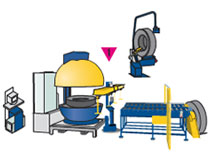
1. Inspection
Our qualified inspectors with the help of our high technology equipment inspect the future retreaded tire.
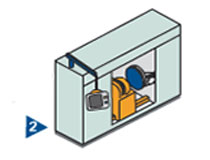
2. Buffing
Buffing is the step where we take off the old tread from the tire. Our new generation equipment takes off every residue of the old tread uniformly to ensure maximum adhesion of the next retread tire.
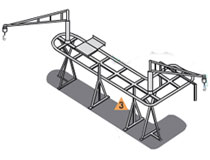
3. Repair
At this step, if needed, we repair the casing ensuring the integrity of the retread tire.
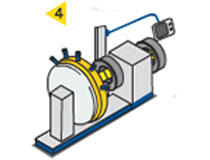
4. Building
Ringtread technology aligns perfectly and puts the new tread on the casing of the tire. It ensures that there is no deformation in the tread.
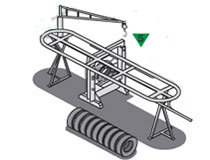
5. Curing preparation
Membranes are installed inside and outside the tire to ensure a full sealing during the curing.
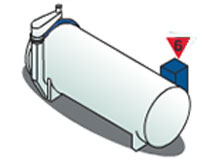
6. Curing
At this step of the process, the retreaded tire is heated and put under pressure to ensure the perfect vulcanisation of the tread and the casing.
Why use the Ringtread system?
Ringtread technology allows us to provide a high-quality product with a low failure rate. These qualities are mainly due to the following reasons:
Buffing (step 2)
By taking off uniformly the residue of the old tread, we ensure that the casing is smooth. It guarantees that the new tread to join the casing perfectly all around it. The absence of any deformation in the tread ensures a longer longevity to the retreaded tire.
Building (step 4)
During the building of the tire, the Ringtread technology puts a full ring of tread on the casing instead of a stripe. Since the tread is splice-less, it guarantees a greater resistance of the retreaded tire. The vast majority of the competition have stripe treads that causes weakness to spliced section. Also, during the molding of the tread, our technology molds it with a convex profile that matches the curvature of the casing. That way, there is no deformation of the tread when it is installed on the casing.
Curing (step 6)
Since the tread is perfectly adjusted to the casing, there is no space between the tread and the casing, the joining of those is optimized. It ensures a pattern uniformity, more security and more comfort. The use of a stripe may allow a shift between the tread and the casing risking that the tread unsticks from the casing.
